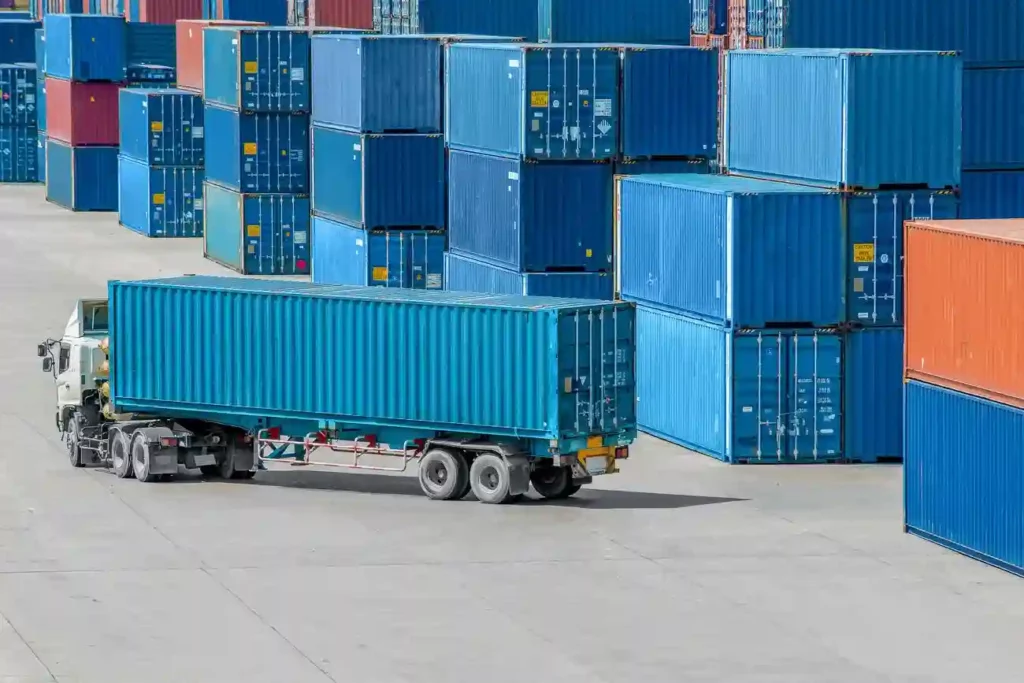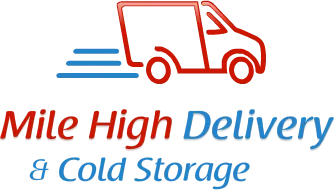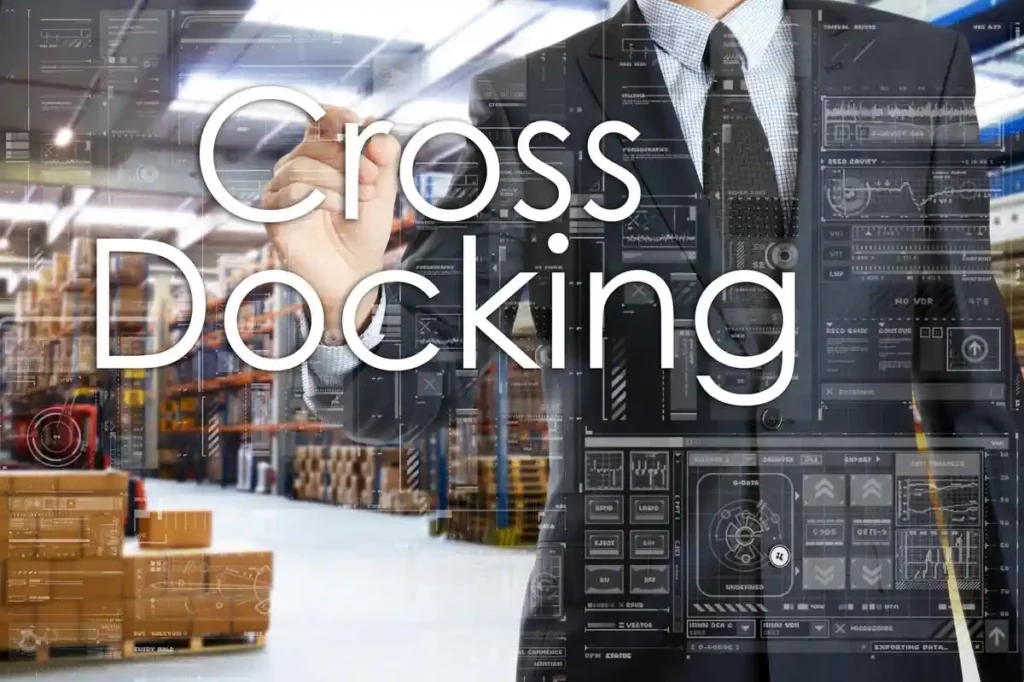Cross-Docking is a logistics strategy that involves the rapid transfer of goods from inbound transportation, such as trucks or containers, directly to outbound transportation, like delivery trucks, with little to no time spent in storage.
In essence, it’s a “dock-to-dock” process where products are unloaded from one side of the dock and loaded onto another, facilitating a smooth flow through the supply chain.
The primary goal of Cross-Docking is to expedite the movement of goods and reduce unnecessary inventory holding time, leading to faster order fulfillment and improved overall supply chain efficiency.

The Cross-Docking Process
The Cross-Docking process involves several steps to ensure the swift and efficient transfer of goods from inbound transportation to outbound carriers. The steps involved are as follows:
1-Receiving
- Inbound shipments are received at the Cross-Docking facility from suppliers or manufacturing plants.
- Products are quickly unloaded from trucks or containers and moved to the sorting area.
2-Sorting
- Products are sorted based on their destination and the outbound carriers they will be loaded onto.
- Efficient sorting ensures that products are grouped together for immediate transfer to their final destination.
3-Inspection
- Products may undergo a brief inspection to ensure they meet quality and safety standards.
- Damaged or compromised items may be identified for appropriate action, such as removal or re-routing.
4-Temporary Storage
- While Cross-Docking aims to minimize storage time, some products may require short-term storage before being transferred to outbound carriers.
- Products are staged in designated areas based on their destination and shipment schedules.
5-Loading and Transfer
- Products are quickly loaded onto outbound carriers, such as trucks or trailers, based on their destination and delivery route.
- Loading is done efficiently to maximize carrier capacity and minimize handling time.
6-Outbound Transportation
- Loaded carriers leave the Cross-Docking facility promptly to deliver products to their final destination, such as retail stores, distribution centers, or directly to customers.
- This step ensures that products reach their intended recipients in a timely manner.
Challenges and Considerations in the Cross-Docking Process
The cross-docking process, due to its rapid nature and low margin of error, involves challenges and some key considerations for its successful implementation. Following are the basics businesses should be mindful of when implementing cross-docking.
1-Coordination between Suppliers, Manufacturers, and Retailers
One of the primary challenges in Cross-Docking is achieving seamless coordination between suppliers, manufacturers, and retailers.
Since Cross-Docking involves the swift movement of goods from inbound to outbound transportation, any delays or miscommunications among these stakeholders can disrupt the entire process.
To overcome this challenge, companies must implement supply chain management systems that facilitate real-time data sharing and visibility. Advanced technologies, such as cloud-based platforms and EDI (Electronic Data Interchange), enable stakeholders to access accurate inventory data and track shipments throughout the Cross-Docking process.
Additionally, establishing strong partnerships and contractual agreements with suppliers and retailers can foster a cooperative environment and facilitate smoother operations.
2-Infrastructure Requirements for Successful Cross-Docking
Adequate infrastructure is critical for the successful implementation of Cross-Docking. The layout and design of the Cross-Docking facility must be optimized for efficient handling and transfer of goods. This includes strategically placed docks, staging areas, and streamlined workflows to minimize product movement and maximize productivity.
Moreover, the facility must be equipped with appropriate handling equipment, such as forklifts, pallet jacks, and conveyor systems, to expedite the loading and unloading process. Advanced technology, such as barcode scanners and RFID (Radio-Frequency Identification) systems, can also enhance accuracy and traceability during sorting and transfers.
The location of the Cross-Docking facility is also crucial. Ideally, it should be strategically positioned to minimize transportation distances between suppliers, manufacturers, and retailers, reducing transit times and overall logistics costs.
3-Risk Management and Contingency Planning
Cross-Docking introduces certain risks that businesses must address to ensure uninterrupted operations. As goods move swiftly through the supply chain, any disruptions, such as transportation delays, weather events, or labor shortages, can lead to bottlenecks and impact delivery schedules.
Implementing effective risk management and contingency planning is vital to mitigate these challenges. Companies should develop alternative transportation routes and backup plans in case of unforeseen events. Maintaining safety stock or buffer inventory can provide a cushion during unexpected fluctuations in demand or supply chain disruptions.
Additionally, monitoring and tracking systems help identify potential issues early, enabling prompt responses and solutions. Cross-Docking facilities should have clear protocols for handling exceptions, such as damaged goods or incorrect shipments, to minimize disruptions and maintain customer satisfaction.
By addressing these challenges and considerations, companies can optimize the Cross-Docking process and enjoy the full benefits of this efficient logistics strategy.
Conclusion
If you are planning to use a cross-docking service for your business, then it can be helpful to familiarize yourself with the process. Going through the steps mentioned above can help you estimate potential cost-saving opportunities and make your processes more efficient.
At Mile High Delivery & Cold Storage, we understand the importance of seamless supply chain operations, and facilitate businesses with a fleet of trucks, trailers, and vans. Contact us today for more information.

